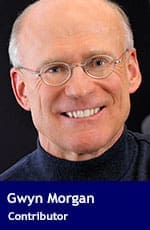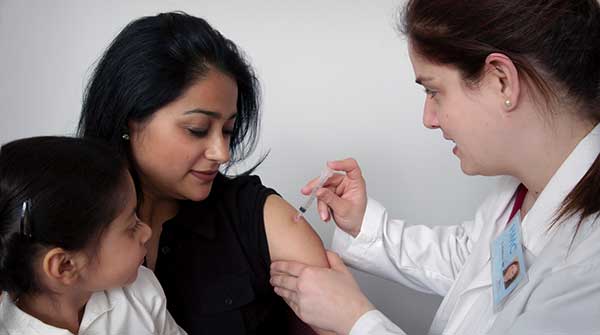Canada is facing a severe family doctor shortage. Here is how we can fix it
 In our neighbourhood, there are many “everyone deserves a family doctor” signs. The sentiment isn’t surprising, but it’s based on the fantasy that putting up a sign will somehow create more doctors.
In our neighbourhood, there are many “everyone deserves a family doctor” signs. The sentiment isn’t surprising, but it’s based on the fantasy that putting up a sign will somehow create more doctors.
The reality is that Canada faces a critical and growing shortage of doctors, and there’s no quick solution. It takes at least 10 years to become a family doctor and 14 years for specialists.
The journey to becoming a doctor usually begins with a four-year undergraduate degree in a scientific field before applying to medical school. Getting into medical school is very competitive, so it’s important to achieve high grades. Data from the “Master Student” website shows that the 2021 medical school acceptance rate at 13 universities averaged just 5.5 percent.
Medical school lasts four years. Successful graduates then embark on hospital-based residency, which currently takes two years for general practitioners and up to seven years for specialties.
 Photo by CDC |
| More from Gwyn Morgan |
| Canada’s healthcare system one of the worst in the world
|
| Three things governments got wrong in handling COVID-19
|
| China’s emissions charade has gone on far too long
|
Residency is a very demanding and sometimes traumatic experience. Residents do tasks not needing the highest expertise levels, leaving supervising doctors to perform those. They can be required to work a very demanding 70 hours per week and 100 hours in peak periods, with shifts of up to 26 hours.
A 2021 article by two Canadian residents and an emergency room physician, entitled “It’s time to abolish 26-hour shifts for residents,” articulates an increasing pushback against such hours, which can easily lead to burnout, a health risk to both patients and residents.
There’s an even more harmful factor that residents are fearful of talking about. Residents know their careers are in the hands of the doctors they work under. Metaphorically, they are slaves to their supervising doctors. To extend the metaphor, there are supervising doctors who treat their “slaves” well, but others who don’t. Understandably, the poorly treated ones don’t risk their careers by complaining.
I became aware of this issue when a resident doctor at a Toronto hospital travelled to Alberta with her fiance for an important event that my wife and I were also involved in. Her flight back to Toronto arrived at 4:30 a.m. Her shift started at 6:00 a.m., so she planned to go directly from the airport to the hospital. She seemed very worried about the possibility of being late.
I was surprised to hear that. In a normal employer/employee relationship, you would expect that telling your boss you were late because you flew all night after meeting an important commitment would prompt thanks that you were coming to work at all.
When she was out of earshot, I asked her fiance why being late mattered so much to her. His answer shocked me. He said that being even 10 minutes late would add to the stress of her normal day of routinely disrespectful treatment from her supervising doctor.
One of my friends told me his cardiologist wife experienced similar treatment when she was a resident years ago. As she puts it: “I was doing very well as a cardiology resident, getting top ratings. When my father was dying, I travelled to visit him. He died the next day, and rather than staying until the funeral, I immediately flew back to complete my 30-day resident rotation. When I returned, my physician supervisor, only days after my father had died, accused me of ‘coasting’ and said he was ‘going to recommend that I fail.’ I was very upset because it was to be my final rotation before graduating as a doctor. Thankfully, I was assigned a different physician supervisor and granted a repeat rotation to became a fully qualified cardiologist.”
Last year, 2,900 new doctors graduated in Canada. Given the arduous path they had to follow to get there, it’s a wonder it’s that many. But it’s woefully short of what we need.
Canada’s physician shortage is most urgent in primary care. And it’s only going to get worse. One in six family doctors is 65 or older and nearing retirement. Moreover, there’s been a steady decrease in the proportion of new medical graduates choosing family medicine. This is attributed to reports of burnout from spending their days trying to deal with overloaded waiting rooms and their evenings filling out forms required by Medicare bureaucrats. No wonder only 31 percent of those 2,900 graduating doctors ranked family medicine as their top choice.
Given this alarming trend, it’s inexplicable that the College of Family Physicians wants to increase the two-year residency to three years.
Despite the issues I’ve cited, the fact remains that Canadian-trained doctors are among the very best in the world. But the number graduating isn’t nearly enough. What can be done? Here are this engineer’s recommendations:
- The average acceptance rate of university medical schools is just eight per cent. Double it. Getting in will still require very high academic performance.
- Expand the number of residency slots to match the increase in medical school graduates.
- Adjust resident working hours and eliminate the “slave/master” culture.
- Ditch all plans to increase family doctor residency to three years from two.
Our broken healthcare system is on the brink of a complete meltdown while high immigration rates expand the patient base. Doctors are retiring. And yet, both medical student acceptance rates and the unnecessarily fraught path to becoming a doctor remain stuck in neutral.
Surely Canada can do better than this.
Gwyn Morgan is a retired business leader who has been a director of five global corporations.
For interview requests, click here.
The opinions expressed by our columnists and contributors are theirs alone and do not inherently or expressly reflect the views of our publication.
© Troy Media
Troy Media is an editorial content provider to media outlets and its own hosted community news outlets across Canada.

